Visiting the Dachau Concentration Camp isn’t something one is particularly excited about. It’s the kind of place that one goes not for recreation, but to witness the extent of mans cruelty and how some of us are willing to go to every extent to gain power over others. Dachau Concentration Camp tells a story of suffering and fear that is not for the weak-hearted, it evokes a sense of utter discomfort and relentless sadness that one can’t shake off. The camp opened its doors to the public in 1965 and around 800,000 people visit the place the witness the diabolical brutality of Nazis against the weak and the powerless.
If you are thinking of visiting the camp, refer to our guide on the place, where we have explained everything from the history of Dachau Concentration Camp to the must-see sites you have visit when touring the place.
Dachau Concentration Camp – A Glance
Dachau Concentration Camp – History
“If I was there, I would have used my voice, World War II was not a war but genocide” sighing, says the person blind, to the genocide happening at the Dome of the Rock shrine.
Fatima Naqvi
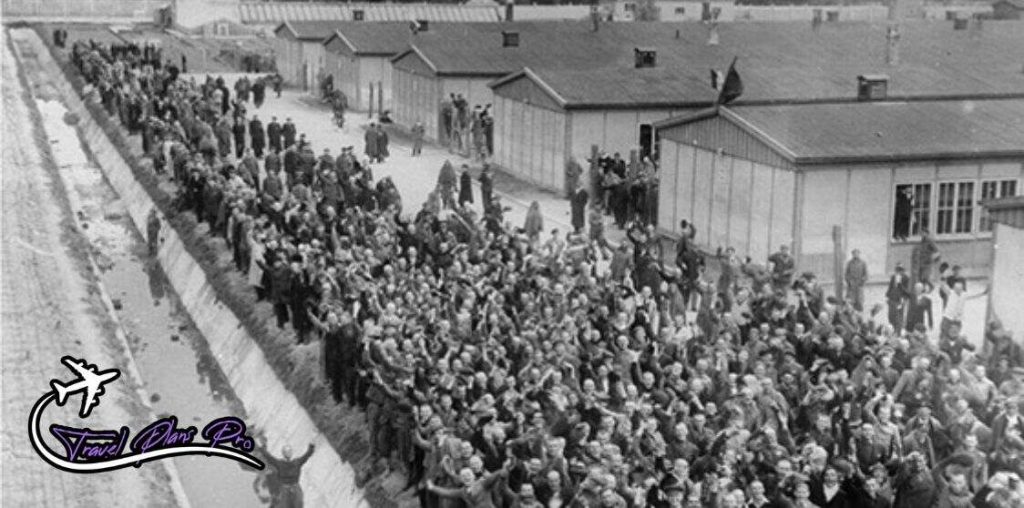
Adolf Hitler and the National Socialist German Workers’ Party or the Nazi Party assumed power in Germany on 30th January 1933. Shortly after on 20 May 1933, Heinrich Himmler, the Chief of Police of Munich announced the establishment of a concentration camp at Dachau, while addressing the people in a press conference. On 22nd March 1933, two days after the press conference, the Dachau Concentration Camp formally opened and became the first SS concentration camp of the Nazi regime. The Dachau Concentration Camp was located in an abandoned World War I munitions factory.
Initially, the camp was meant to house political prisoners–communists, social democrats, and other Nazi political opponents in an effort to consolidate the Nazi’s grip on power. In the initial days, Dachau Concentration Camp could hold about 5,000 people and between the years 1933 to 1935, the Nazi regime gradually filled Dachau with German political prisoners. Dachau Concentration Camp was overseen by a rabid Nazi Theodor Eicke who was appointed by Himmler himself. Under his oversight, Dachau became the prototype for the operations and layout of later Nazi concentration camps.
Theodor Eicke introduced a regime that consisted of degrading and systematically terrorizing the prisoners of the concentration camp. Under this regime, Dachau became a murder school where SS guards and other camp officials were trained to get used to brutal violence and torture. In 1935, with the passing of the Nuremberg Race Laws, racial discrimination based on the Nazi policy of “protection of German blood and honor” was allowed, afterward which, the original purpose of Dachau was modified.
Dachau Concentration Camp became a prison for all those that declared to be an enemy of the Nazi party. These people were deemed as “asocial” and “undesirables” and included criminals, Jehovah’s Witnesses, Jews, Sinti and Roma, mentally ill, homosexuals, and politically committed clergymen. They were forced to don a badge of shame and were subject to such disgrace and brutality that wasn’t short of inhumanity.
When the Second World War broke out the population at Dachau Concentration Camp swelled beyond its capacity. By 1944 more than 30,000 individuals were held prisoner at the camp and were kept in abominable conditions. Due to inadequate sanitation, disease, and sickness ran rampant throughout the camp. Despite not being an extermination camp like Auschwitz Birkenau or Treblinka, out of 206,000 inmates that entered its gates, 32,000 perished there. However, a large number of people were registered, which makes it different to determine how many were imprisoned and how many met their ends at the Dachau Concentration Camp.
The concentration camp remained in operation for about 12 years until it was abandoned on 28 April 1945 by the SS. A day after that, the United States Army liberated Dachau, ending the tyranny of the Nazis. Dachau Concentration Camp was converted into a memorial site in 1965 and opened its doors to visitors from all around the world.
Is Dachau Concentration Camp Worth the Visit?
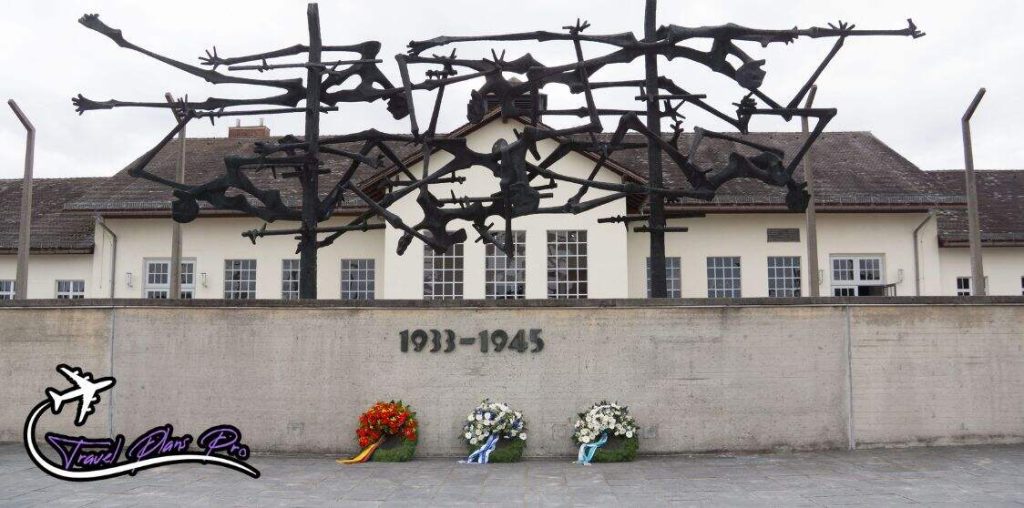
Why would anyone want to visit Dachau Concentration Camp? A question that might be spiraling in most of your minds, because in all honestly, who would want to visit a macabre place where thousands lost their lives? But visiting it is 100% worth it. You cannot understand the fear, perseverance, suffering, and Holocaust until you have visited a concentration camp. Even though it is not a pleasant way to spend your vacation days, it is worthwhile and beyond your wildest imagination. The concentration camp provides a raw World War II learning experience allowing you to connect to the events, no matter how revolting, that have taken place there.
Some said, “It’s not about remembering what happened, it’s about never forgetting it”, visiting a somber historic site is not only about learning history but these sites also serve as a warning to humans not to repeat the treacheries and the horrors of the past. Unfortunately, some of us fail to learn from these experiences and fail to realize that we aren’t as invincible as we think we are.
A living, breathing version of the Holocaust that exists in today’s “modern” age is Palestine. We couldn’t help humankind when a man like Hitler crossed the barriers of right and wrong just to assume power and oppress the weak and we aren’t doing anything now as hundreds continue to die in Palestine at the hands of diabolical beings. Their crime? Just like the German Jews, they are weak.
Touring the Dachau Concentration Camp
The Gatehouse and the Front Gate
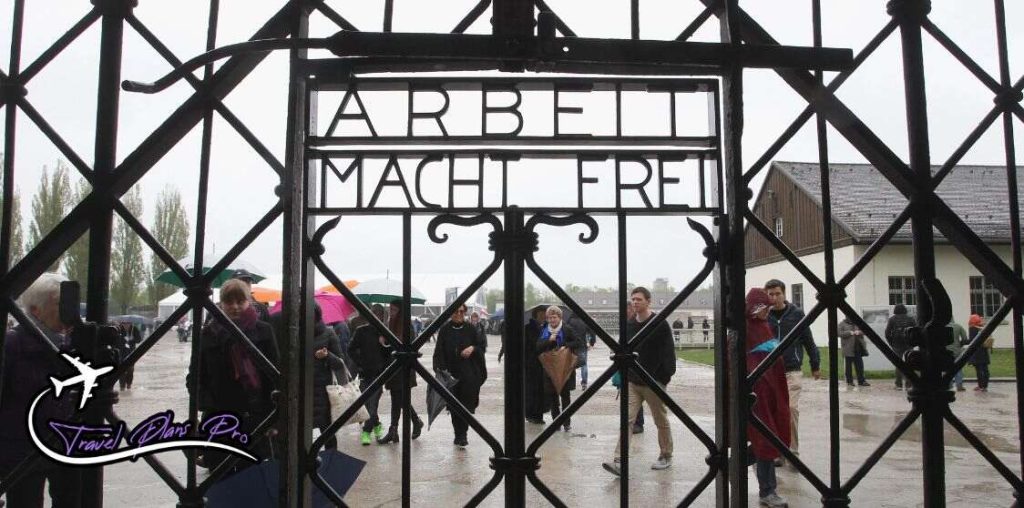
Once you pass the visitor’s center you will be met with the towering structure of Dachau Concentration Camp gatehouse, officially known as Jourhaus. The gatehouse is a two-story building that was house to guard rooms and offices of the departments that were responsible for running the camp. When the Dachau Concentration Camp was in use, the Jourhaus was the only entrance to and exit from the camp. Visitors enter the concentration camp through the wrought iron gates welded into the front of the gate.
Passing through the gates one can’t help but feel like a prisoner of Hitler’s Reich, the discomfort settles into the depths of one’s stomach and keeps churning until you are past those gates and out into the sanctuary of the world.
The gates also bear the infamous, taunting slogan that was personally chosen by the father of the SS concentration camp system, Theodor Eicke, “Arbeit Macht Frei” which translates to Work Sets You Free. A diabolical irony in the place where not hundreds but thousands of people were worked to their deaths.
Roll Call Yard
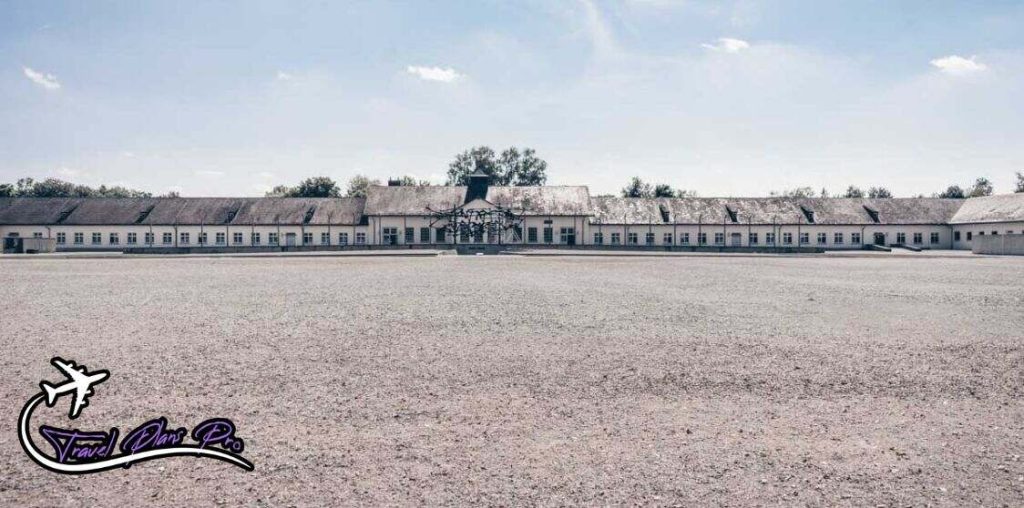
One of the most eerie and disturbing places in the Dachau Concentration Camp is the roll call yard, where regardless of well-being, weather, and age, inmates had to form a line in the gravel at dawn for roll call every single day. The procedure was repeated again in the evening when after ten or more hours of excruciating labor, inmates were made to stand for an hour or more.
It was crucial that the number of persons counted matched the official figure, if it didn’t, and there was a suspected case of attempted escape, the inmates were made to stand longer until the issue was resolved. It was mandatory to participate in the roll call and those who didn’t were punished by death. The roll call yard was also the place where the SS conducted military drills.
International Monument
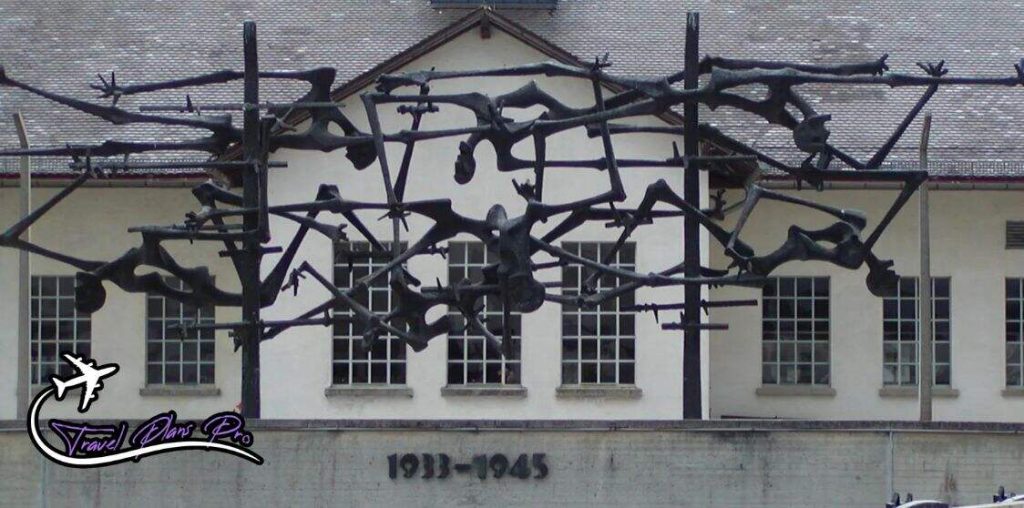
One of the most poignant places you will see at the Dachau Concentration Camp is the International Monument hat was designed in 1968 by Nandor Glid. Nandor Glid was a Yugoslavian Jew, who was prosecuted by the Nazis. The monument depicts the suffering and desperation of the suicidal prisoners and showcases emaciated bodies caught in barbed wire. Towards the monument’s end is an urn with the ashes of unknown prisoners and behind it the words “Never Again” are engraved in French, English German, Russian, and Yiddish. The monument serves as a grim reminder of the atrocities and the sufferings inflicted by the Nazis.
The Maintenance Building
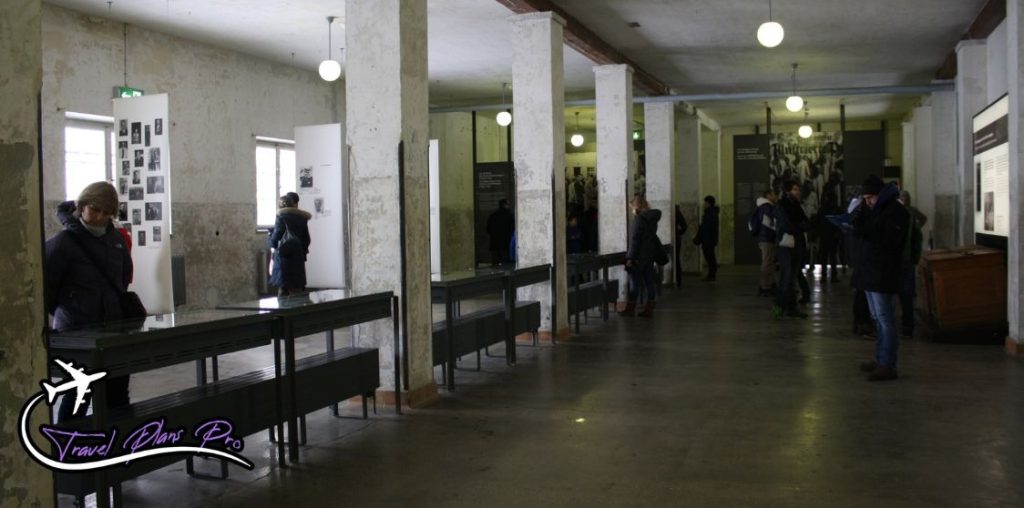
The main exhibition of the Dachau Concentration Camp Memorial Site is housed in the former maintenance building. Set over the course of 13 rooms, the exhibition chronologically lays out the details of the Dachau Concentration Camp and also tells the story of the site since its liberation in the year 1945. The exhibition consists of texts and photos that are displayed on information panels, providing an insight into the camp and its history.
Camp Prison
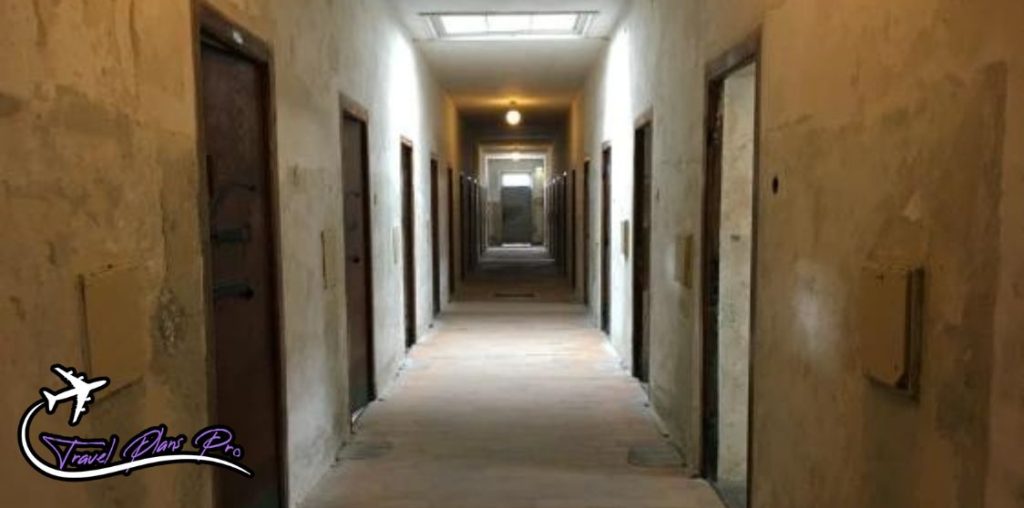
Behind the old maintenance building, you will find the camp prison, a complex of solitary confinement prison cells. It was this place where the SS subjected insubordinate prisoners to harsh punishments and held others awaiting execution. The German carpenter, Georg Elser, who nearly assassinated Hitler with a homemade bomb was executed in this very prison a few days before the end of World War II. The prison was a vile and insidious place where inmates were subject to unimaginable horrors. It quickly became a centre of terror and was regarded as a bunker.
This prison also had four standing cells in which the prisoners were forced to stand on their feet for days one end. The exhibits displayed at the prison showcase the inmates and the SS guards. Ever since the liberation, the corridor walls in the prison haven’t been repainted and the rows of cells ooze a despondent air.
Barracks
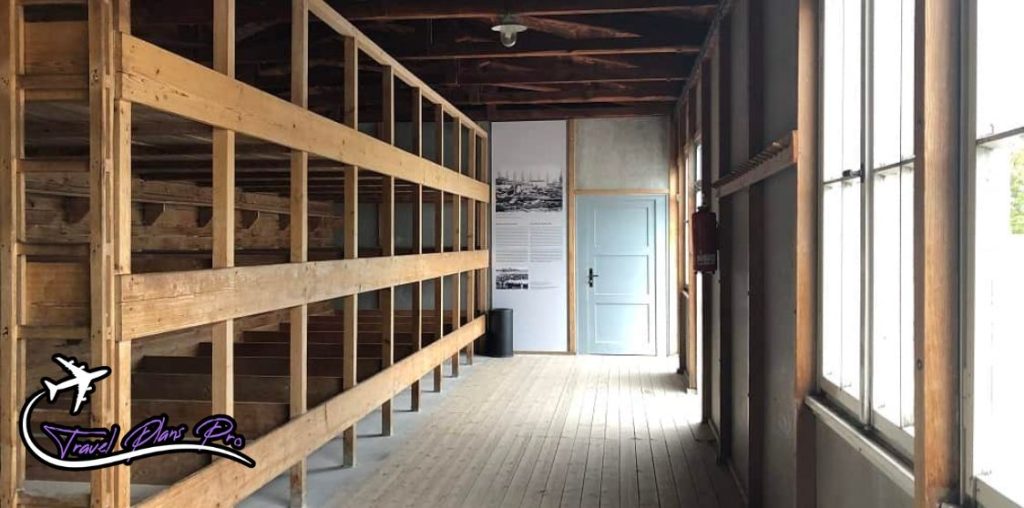
In the Dachau Concentration Camp, the SS installed a complex of 34 barracks. The entire complex was demolished in the year 1964. The two structures that stand today and are visited by countless tourists are replicas that were erected in 1965. By looking at these barracks you can get a general idea of the sleeping and living conditions, and how living, breathing human beings were packed in these suffocating accommodations that were made to hold 200 prisoners but were filled with 2,000 inmates by the end of World War II.
Camp Fence
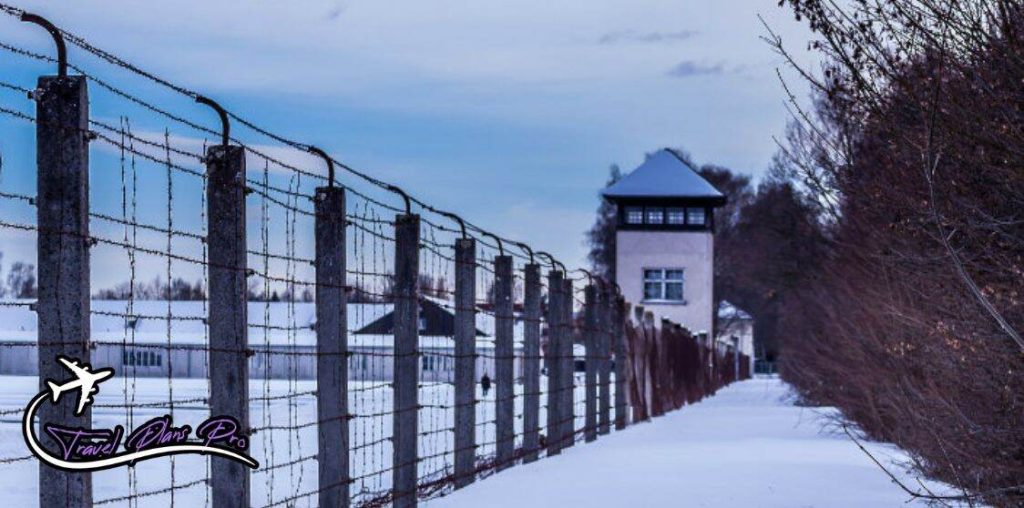
The Dachau Concentration Camp was surrounded in the east, south, and north by a high-voltage barbed wire that prevented the prisoners from escaping. Guard towers were constructed into the fence in which SS officers with machine guns guarded the place around the clock. When the camp was liberated, the camp fence was destroyed. However, when the site became a memorial, two sections of the bard-wire fence and a guard tower were fully reconstructed.
If an inmate stepped a foot into the grass area, it was considered an act of attempted escape, which resulted in the inmate getting shot to death. Some sadistic guards would shove inmates onto the grass strip just to murder them for the sake of enjoyment.
The Crematoriums and the Gas Chamber
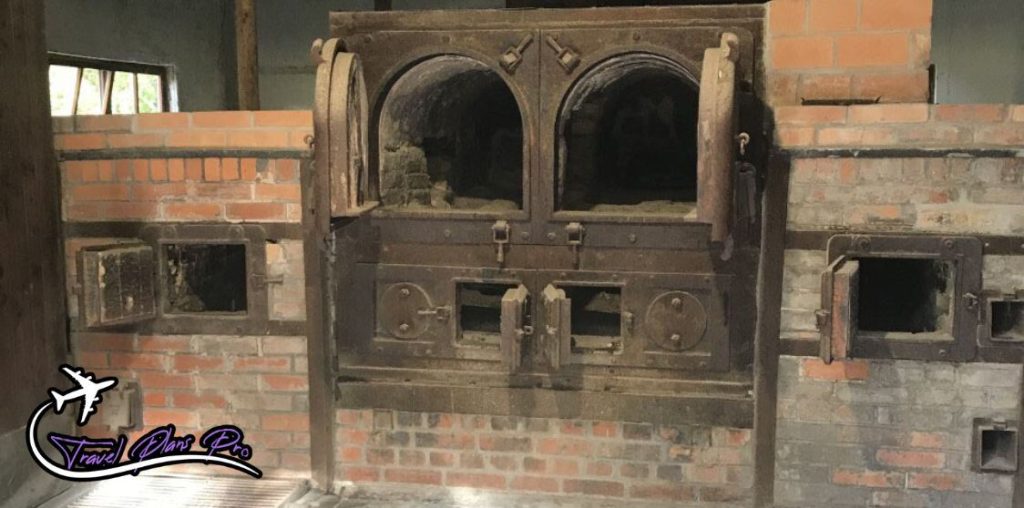
The creepiest part of the Dachau Concentration Camp, the crematorium, and the gas chamber lie at the back of the camp just beyond the camp fence. In the beginning, a small wooden crematorium was used to dispose of the bodies of the inmates who died at Dachau Concentration Camp. However, as the war waged, the population of the prisoners increased and the crematorium couldn’t keep up with the demand, and therefore in 1942, a new crematorium was built that had four furnaces. The building is also home to the notorious gas chamber that was disguised as a shower room. While sauntering in this place one feels an intangible sense of malaise and discomfort.
Religious Memorials

The only place where one feels emotional solace is the religious memorials. These memorials are dedicated to the groups that were persecuted and met their deaths at Dachau Concentration Camp. These memorials include a Carmelite Convent, Jewish Memorials, a Russian Orthodox Chapel, a Protestant Church, and a Moral Agony of Christ Chapel.
Guided Tour the Dachau Concentration Camp
You can opt for a guided tour of the concentration camp by visiting the bookings.com website.
Dark Tourism: Visiting 8 Must See Places in the Chernobyl Exclusion Zone
Another grim and macabre place that tells the story of corruption and how a mere oversight led to the deaths of thousands. Consult our article on the Chernobyl Exclusion Zone to know the story of a ghost town that now resonates with the wails of the past.

